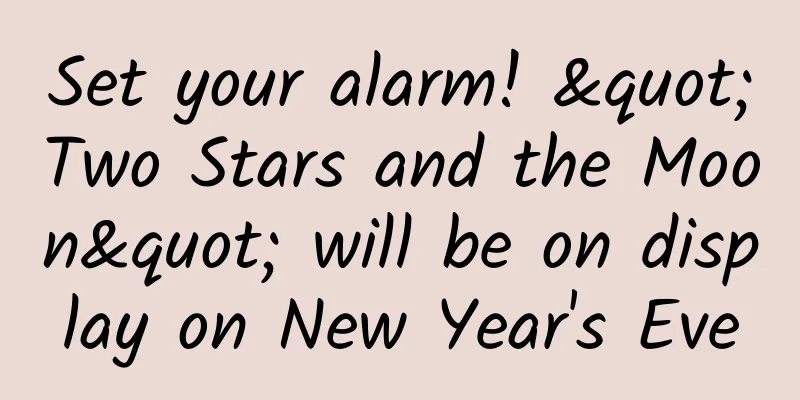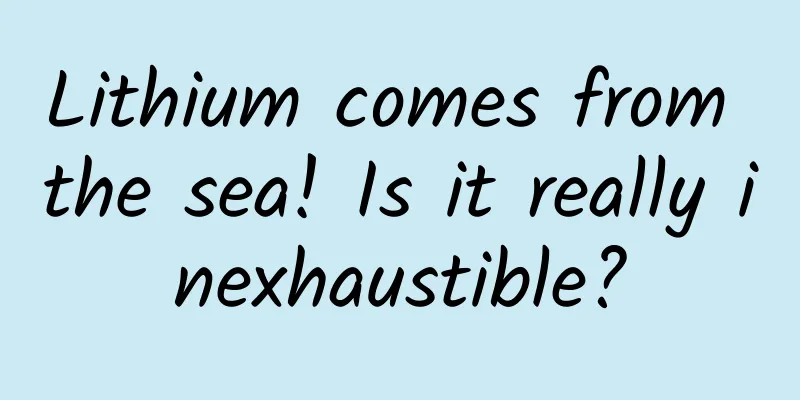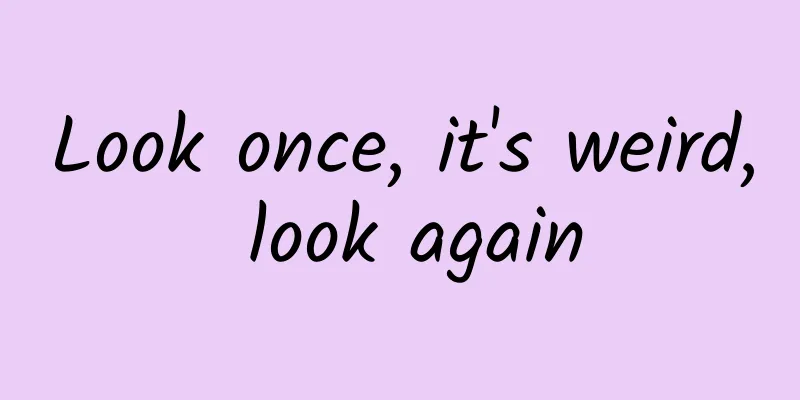Set your alarm! "Two Stars and the Moon" will be on display on New Year's Eve

|
According to the Beijing Astronomical Observatory, on the eve of this year's New Year's Eve, that is, tomorrow morning, the spectacle of two stars accompanying the moon will be staged again. The so-called binary planets accompanying the moon are two planets appearing near the moon. We humans can only see five planets in the solar system with our naked eyes. They are particularly bright among the stars in the clear night sky. These five planets are Mercury, Venus, Mars, Jupiter and Saturn in order from the closest to the sun. The other two planets in the solar system, Uranus and Neptune, are farther away and their apparent magnitudes are both above 6, so they cannot be seen by the naked eye. In addition to planets, all the stars seen in the night sky are stars or galaxies, which are light years away from us, so they appear to be less bright than the weak planets. Stars are also constantly moving, but the distance between stars is too far, and the speed of movement is almost negligible to the human eye, so the positions of stars seem to remain unchanged for thousands of years. The distance of planets visible to the naked eye is not at the same order of magnitude as that of stars. The farthest planet that can be seen is only about 10 astronomical units, or 1.5 billion kilometers, or only about 0.00016 light years away. Although planets do not emit light themselves and only reflect sunlight, they still look very bright. The brightest planet visible to the naked eye is Venus, followed by Jupiter, Mars, Mercury, and Saturn. However, Mercury is too close to the sun and is often hidden in the sun's brilliance, making it difficult to be seen by the naked eye. Jupiter, Venus, Jupiter, Mars, and Saturn can often be seen by people. These planets all revolve around the sun. Their orbital speeds and orbital lengths are different, and their orbital periods are different. For example, the Earth's revolution is about 365.25 days, which humans call a year; Mercury's revolution is about 87.91 Earth days, Venus' revolution is about 224.55 Earth days, Mars' revolution is about 686.51 Earth days, Jupiter's revolution is about 4329.85 Earth days, and Saturn's revolution is about 10832.33 Earth days. Regardless of their orbital period, these planets all move in a rough plane, that is, forming a large circle around the solar equator, which is called the ecliptic. This mode of movement, to the naked eye in the northern hemisphere of the earth, looks like the same movement of the sun on the celestial sphere, from east to west. Although the moon orbits around the earth, the earth also orbits in the ecliptic plane, so it looks like the moon is revolving near the ecliptic. Due to their different movement speeds and periods, the distances between these planets and the moon change every day and every hour in our vision. Sometimes the distances are very far, and sometimes they are very close. The so-called double planets accompanying the moon means that there are two planets visually moving near the moon. Of course, this is just a visual feeling. In fact, these planets and the moon are still in their own orbits, and the distance between them is tens of millions or even billions of kilometers. Knowing this principle, everyone should understand the origin of the phenomenon of one planet accompanying the moon or two planets accompanying the moon, and it will be a common phenomenon. The time of this phenomenon can be calculated just like the lunar and solar eclipses. In fact, in addition to one planet accompanying the moon and two planets accompanying the moon, there are also three planets accompanying the moon. Three planets accompanying the moon means that three planets happen to move near the moon visually, or the moon happens to move near a brighter star visually, and at this time there are two planets nearby, forming the spectacle of three planets accompanying the moon. For example, on March 19, 2020, and April 15, 2020, Mars, Jupiter, and Saturn all formed a triple conjunction with the moon; on March 28, 2022, Venus, Mars, and Saturn had a date with the moon again; and on September 1 and 2, 2014, and June 20 and 21, 2015, Mars, Saturn, and the star Antares formed a triple conjunction with the moon; on January 7, 2016, Venus, Saturn, and Antares formed a triple conjunction with the moon; and on August 12 and 13, 2016, Mars, Saturn, and Antares gathered with the moon again to form the spectacle of triple conjunction with the moon. In the phenomenon of planets and the moon forming an intersection, Venus, Mars, Jupiter and Saturn participate more, while Mercury participates very little. The main reason is that as mentioned earlier, Mercury is too close to the sun and is often obscured by the sun's brilliance and is difficult to see. On February 8, Venus, Mars and the Moon will meet. If the weather is clear, when observing from the Beijing-Tianjin-Hebei region, the bright Venus can be seen first in the low sky in the southeast at 6 a.m. Half an hour later, the red Mars will appear at the lower left of Venus, and the crescent moon will appear at the lower right of Venus. The three will form a roughly equilateral triangle. This time, when the two stars are accompanying the moon, the brightness of Mars is only 1.3, and it is before dawn, so the observable time is less than an hour. In addition, the position of the observer has a great influence on the observation effect, so it is not a good opportunity to observe the two stars accompanying the moon. However, there are many planets and stars accompanying the moon every year. Sometimes there is one star accompanying the moon, sometimes there are two stars accompanying the moon. The phenomenon of three bright stars accompanying the moon is relatively rare. Friends who are interested in stargazing can pay attention to celestial phenomena at any time and observe more according to the guidance of the observatory, and they will definitely gain something. This is an original article from Space-Time Communication. Please respect the author’s copyright. Thank you for your understanding and support. |
<<: Can machines save the human soul? Here comes an AI chatbot that can "talk" to you!
Recommend
Tencent technical tips! How to make a terrifying HTML5 page
The whole text is full of valuable information an...
How to reject words in Baidu bidding? What does bidding no mean?
(1). Baidu bidding negation is generally performe...
In order to avoid using pesticides, they plant wild flowers in farmland?
Vegetables and fruits are an essential part of a ...
Want to get a taste of the laws of the universe? Then you have to take a bite of this vegetable
The Chinese film "Cosmic Exploration Editori...
The dramatic changes in consumption behind the passionate festivals created by home appliance giants
JD.com's 618 promotion has just ended, Suning...
What factors affect the ranking of Baidu’s mobile bidding promotion?
Nowadays, most of our bidding promotions revolve ...
If you want to make smart hardware, listen to these four pieces of advice
[[131781]] In recent years, Sinovation Ventures h...
How to efficiently create a set of advertising creative materials?
How to design a good set of materials quickly and...
China Passenger Car Association & Cree Consulting: Insights into the Three-Electric System of New Energy Vehicles in October 2022
Trends in China's New Energy Vehicle Market I...
A comprehensive analysis of Pinduoduo’s “Get Cash Every Day” campaign!
Regarding Pinduoduo 's "Get Cash Every D...
Online literature and movies: How do they complement each other?
There is a view that the flourishing Chinese lite...
Report: Only 4% of iOS users in the U.S. opt in to ad tracking
According to Flurry Analytics, which has been tra...
The first JD Cup Smart Hardware Challenge came to an end. What will change if we stand on the "shoulders of giants"?
On August 20, after nearly three months, the firs...
Douban surprisingly gave a perfect score of 10.0 to "Planet Earth 2". What's so good about it?
As a movie fan, you may often hear about "Do...









